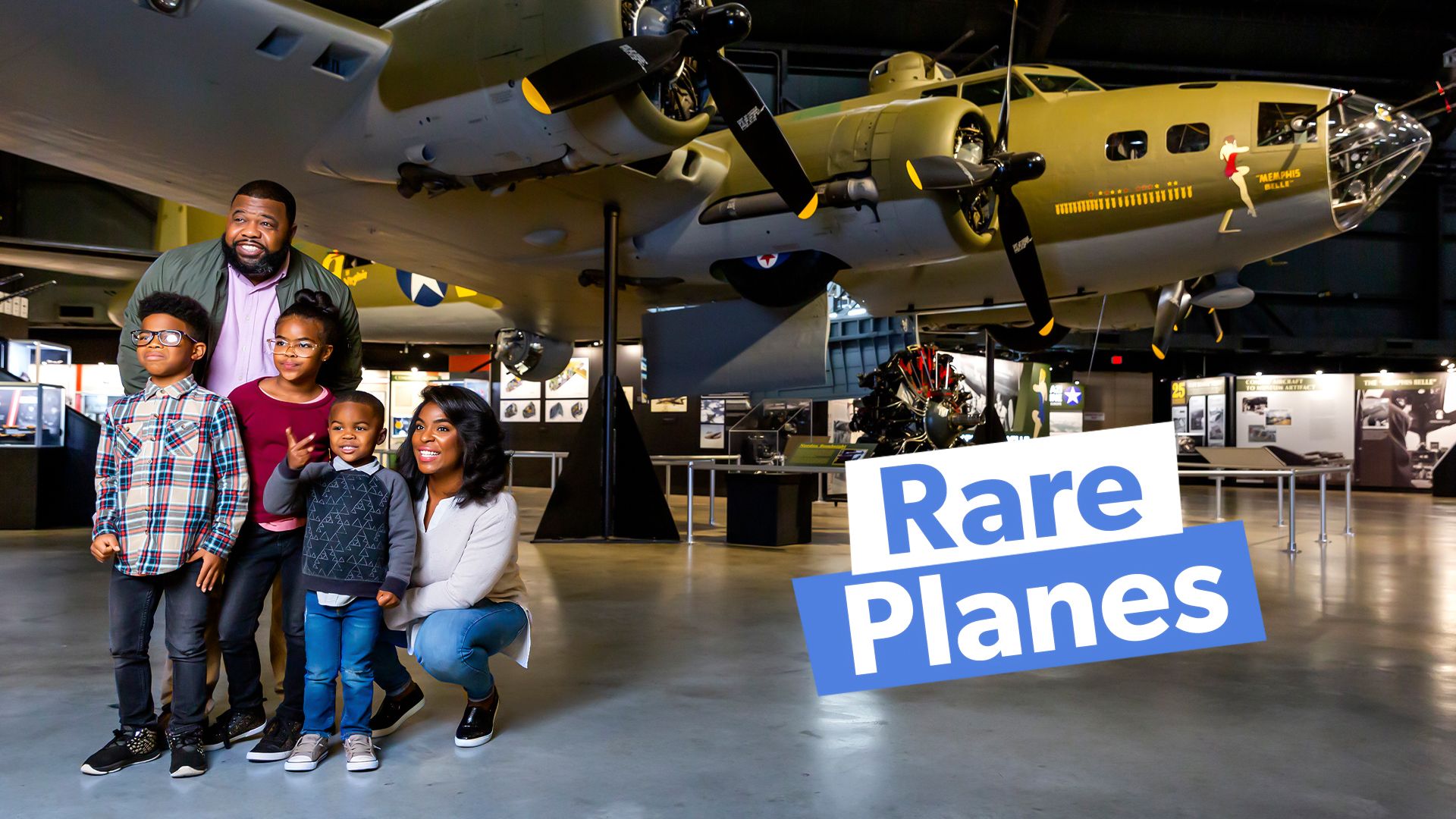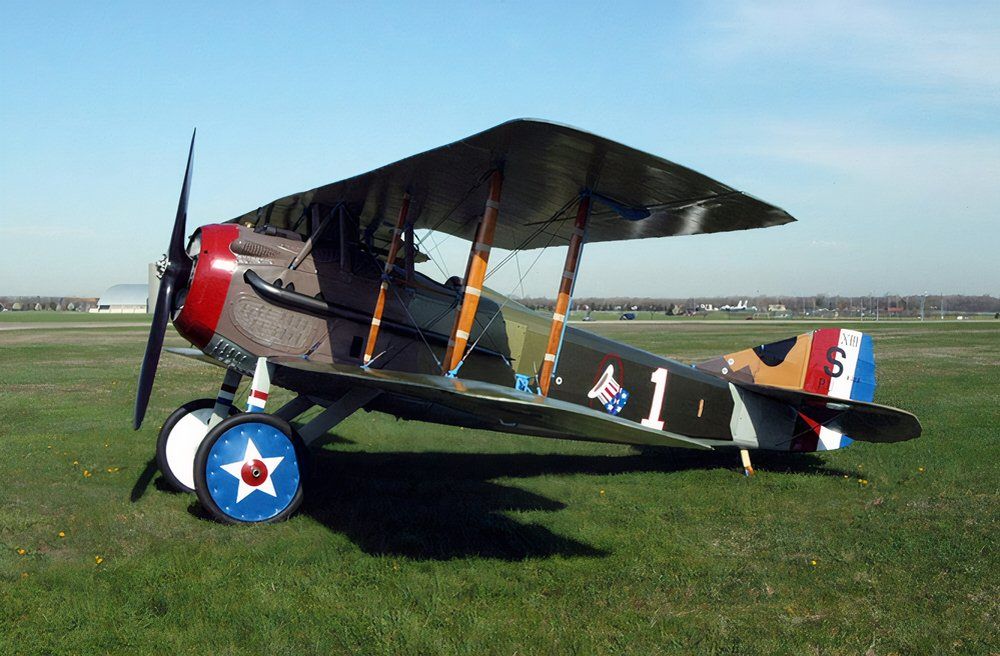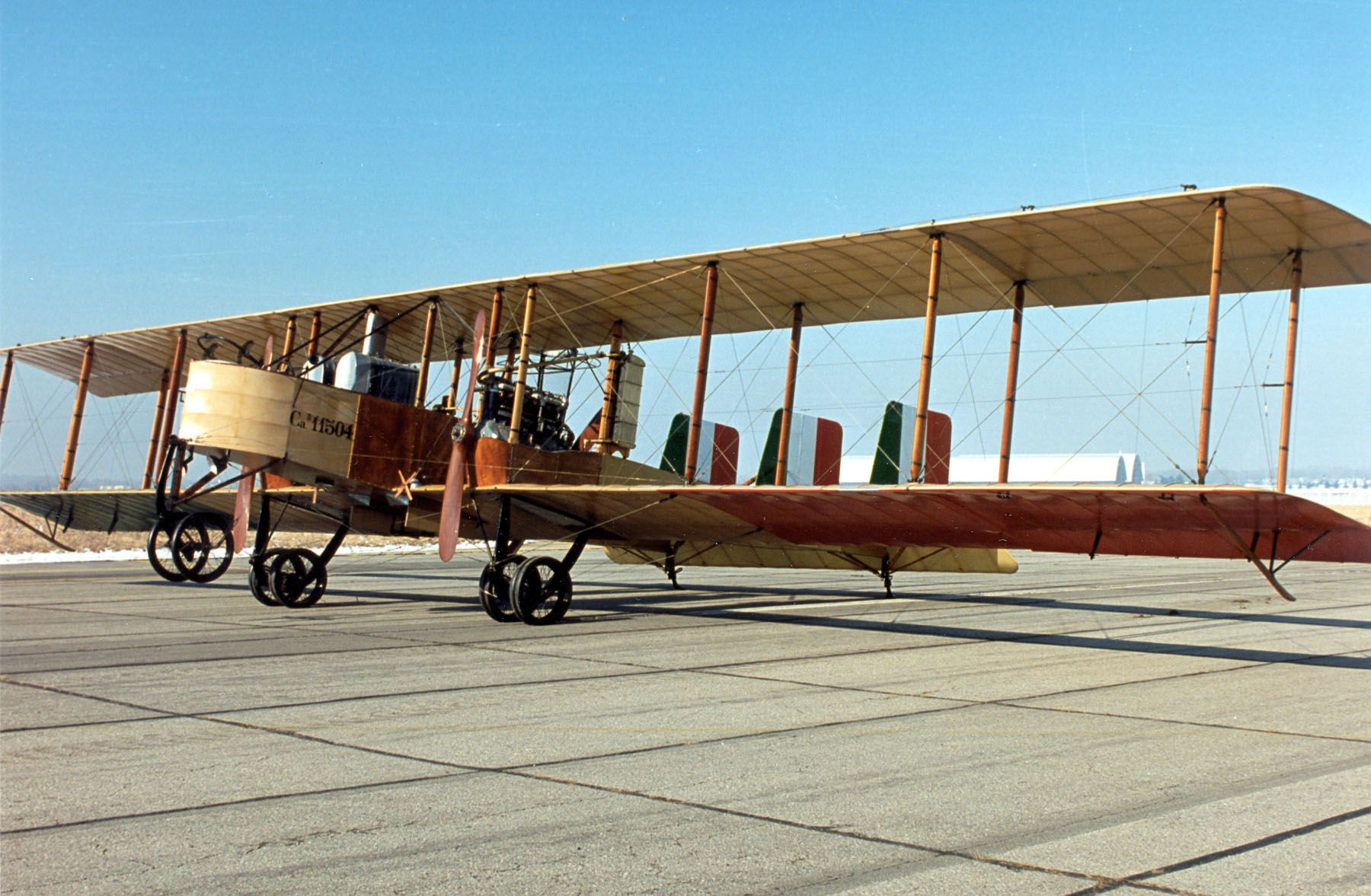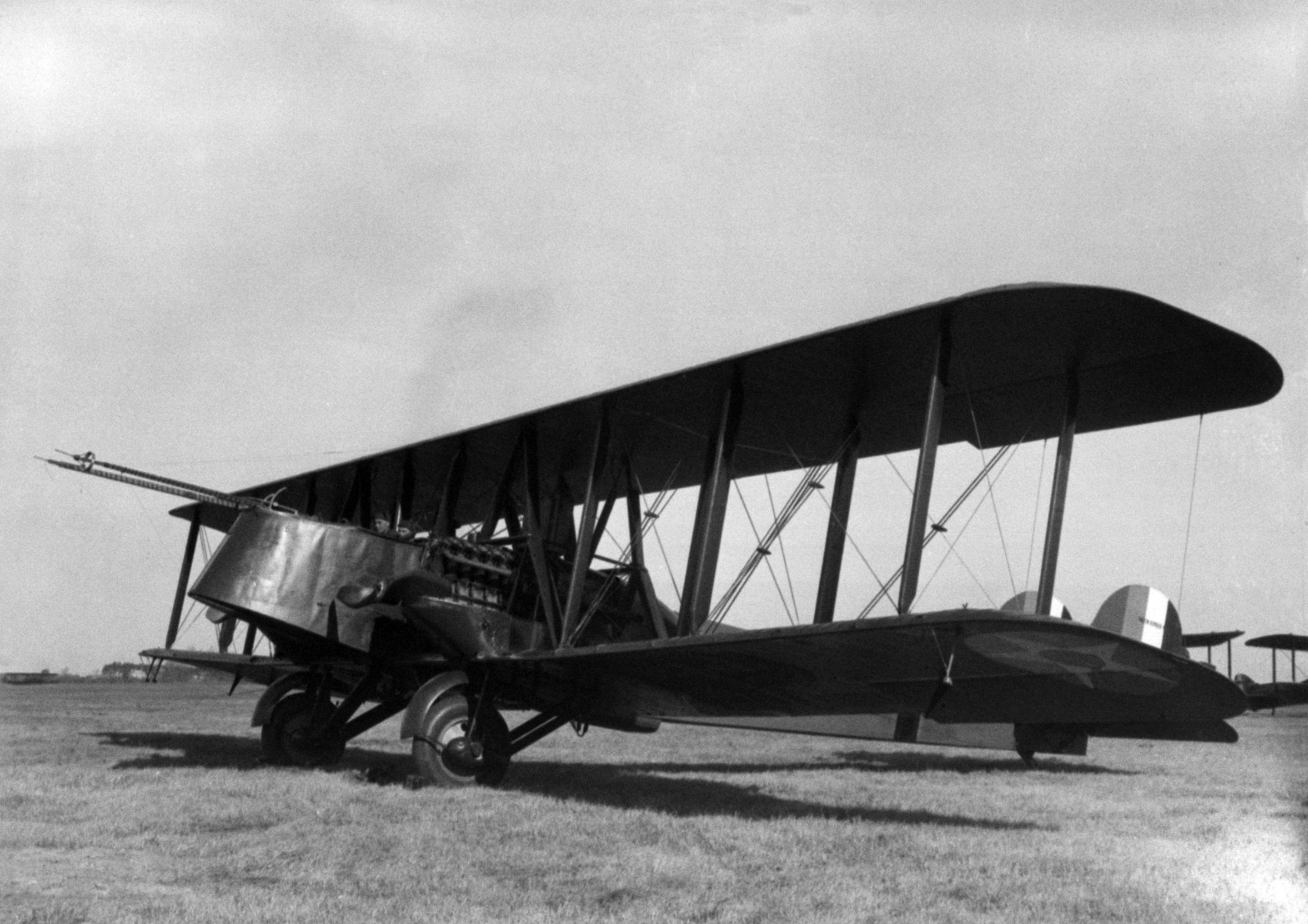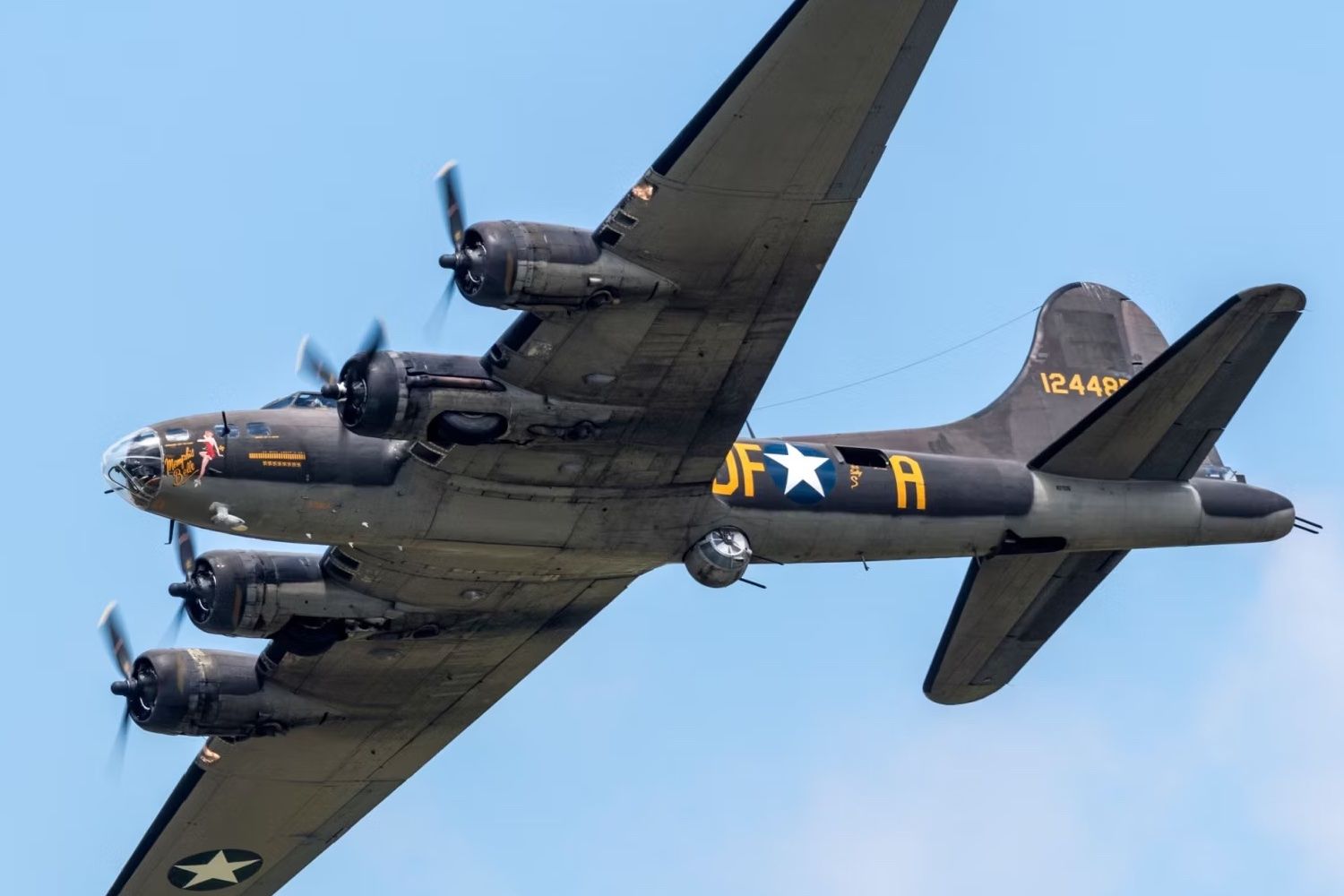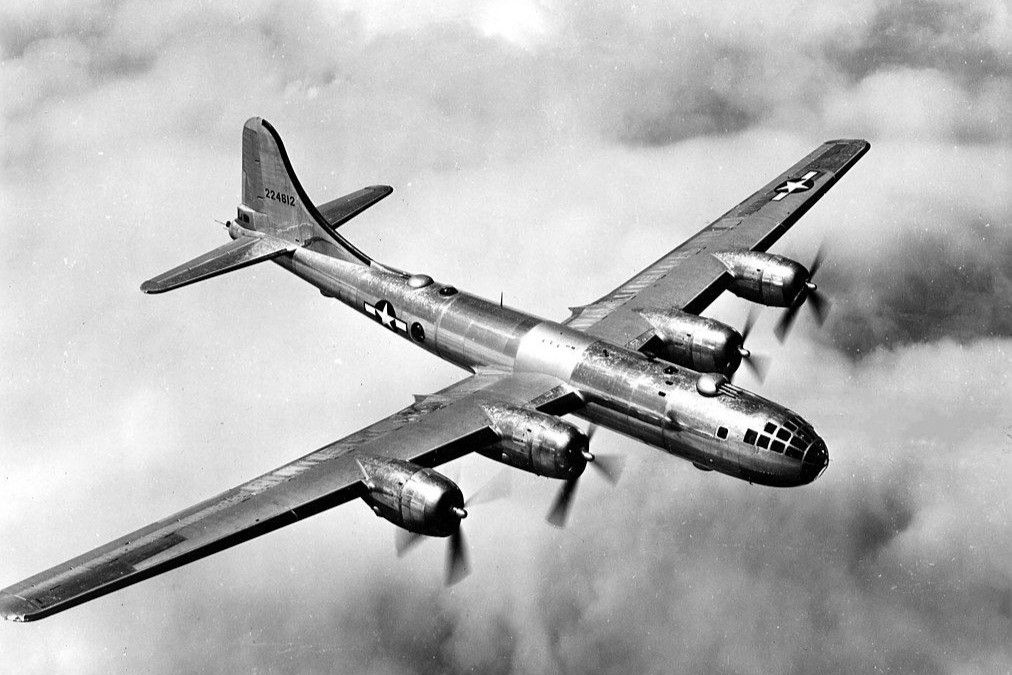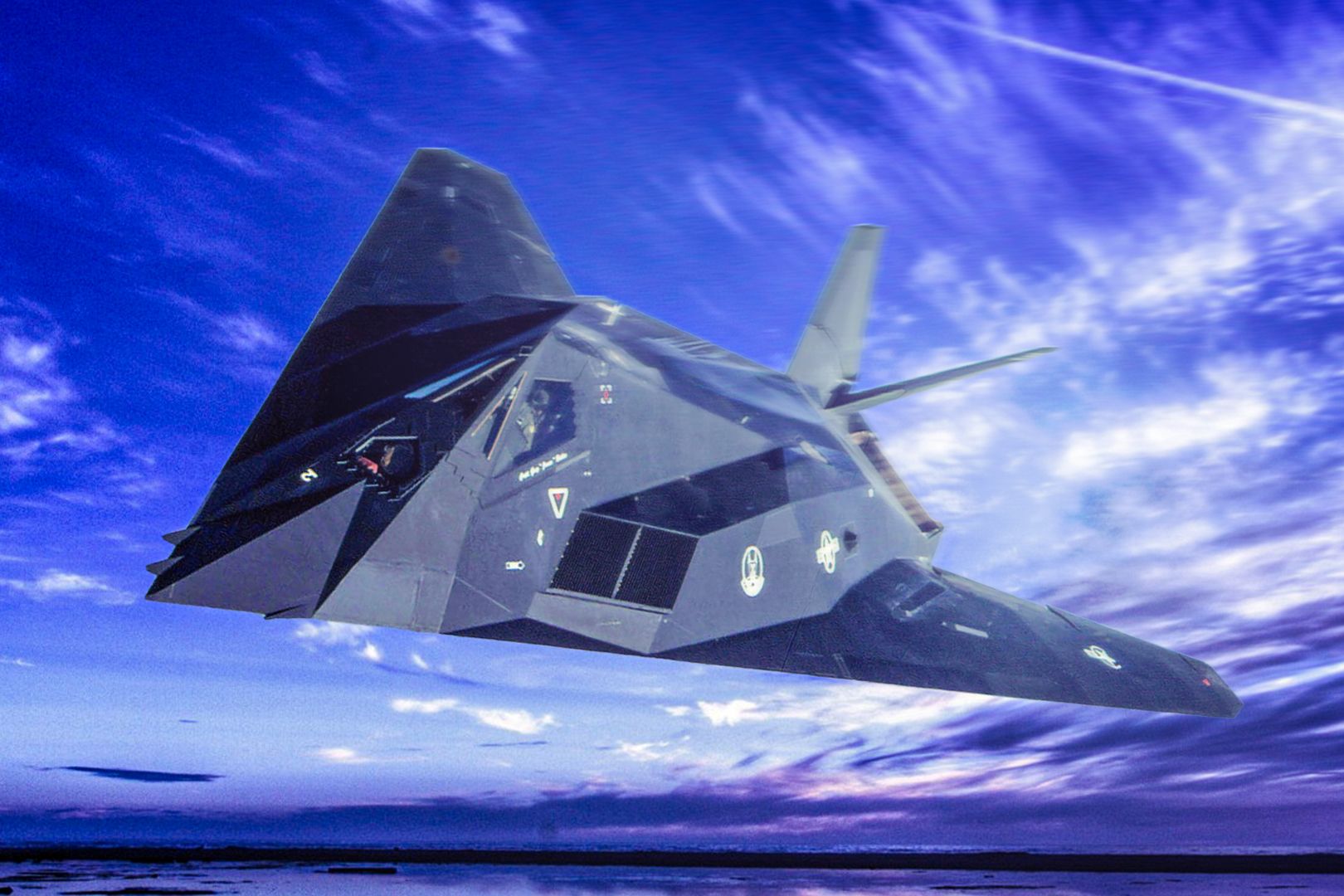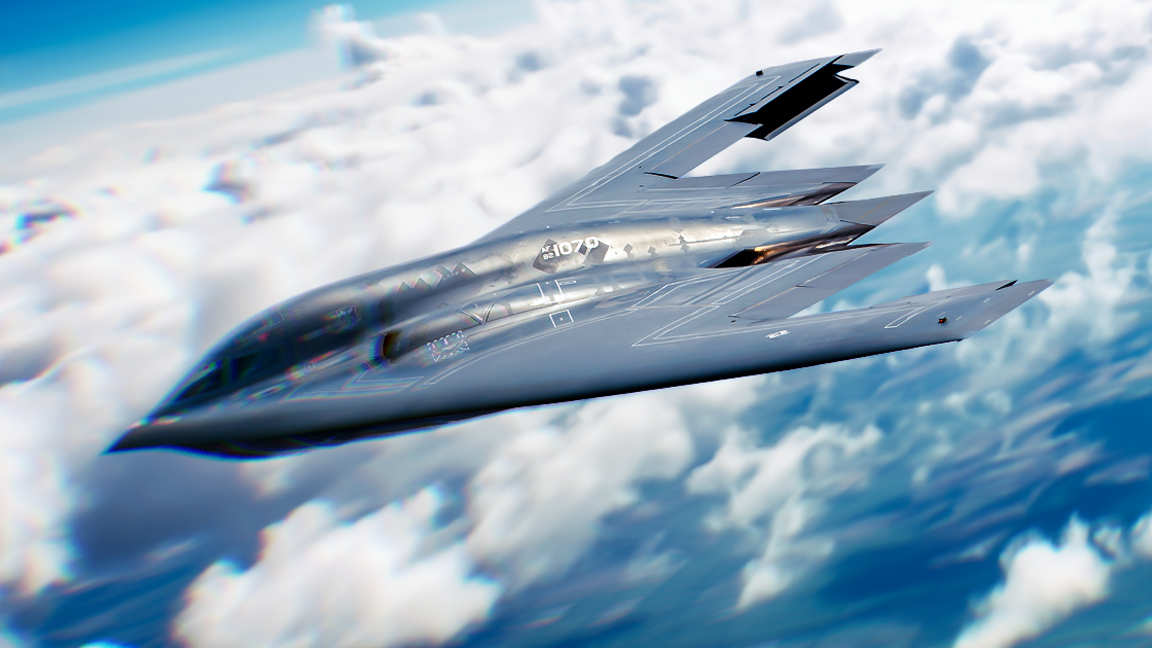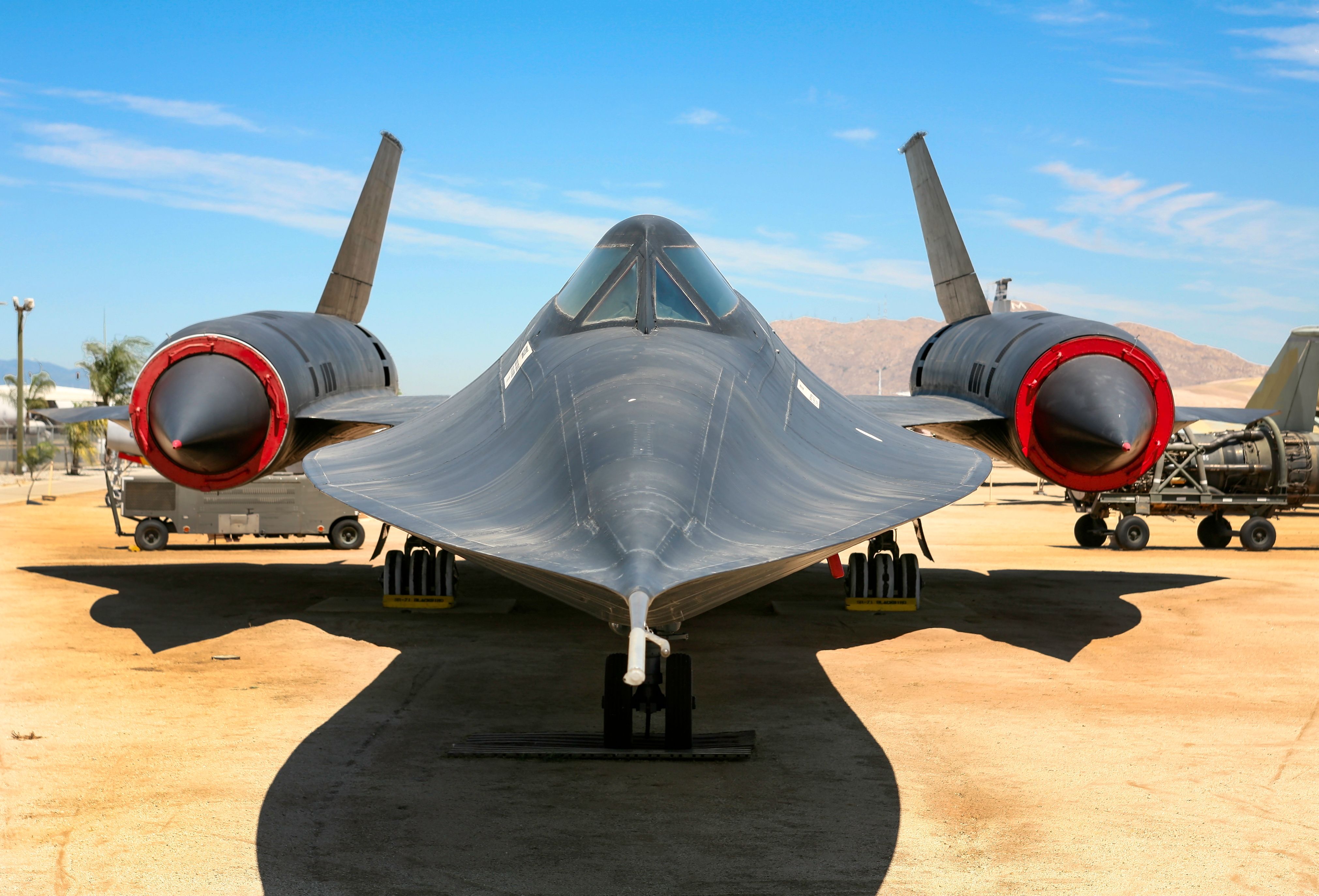Summary
- The museum is located at the Wright-Patterson Air Force Base.
- It houses one of the world’s largest collections of military aircraft, equipment, and documentation.
- Notable exhibits include the B-2 Spirit, SR-71, Boeing B-29 Bockscar, and more.
The National Museum of the US Air Force, located at Wright-Patterson Air Force Base, Ohio, is the world’s largest military museum. It has over 19 acres of indoor exhibit space and houses rare aircraft exhibits spanning the early days of military aviation, from World War I to the present.
More than 800,000 visitors pass through its doors each year. They are greeted by more than 350 items varying from aircraft and support equipment to missiles and photographs, personal effects, and documents highlighting the military’s long history in aviation.
But what are the most exciting and must-see aircraft in its collection? Here’s a comprehensive list of exhibits for visitors heading to the museum.
Human technology advances rapidly during wartime as warring factions attempt to outmaneuver each other with superior equipment and machinery. Aircraft are no different. Here are some of the more noteworthy exhibits from the Great War.
SPAD S.XIII
The Société Pour L’Aviation et ses Dérivés (SPAD) S.XIII is a French bi-plane designed by Louis Béchéreau. It became one of the most capable fighters of its time and one of the most produced, with nearly 8,500 units being produced.
Photo: National Museum of the United States Air Force
The aircraft was superb in a dive and faster than many competitors. However, maneuverability and low-speed flight were weaknesses, which resulted in the aircraft having to land with power on, increasing fuel burn and engine wear.
The aircraft was the successor of the SPAD S.VII and was powered by a Hispano-Suiza HS.8Bd water-cooled V8 engine producing 220 hp (160 kW). However, the engine proved unreliable, resulting in more than two-thirds of the fleet being out of service due to maintenance issues.
The US Army Air Service (USAS) equipped the aircraft with two Marlin M1917 or M1918 machine guns and four Cooper bombs weighing 25 lbs (11 kg). The aircraft on display at the museum is a C.1 variant and is registered S16594. It is painted to represent Captain Edward V. Rickenbacker’s aircraft.
Specifications according to the National Museum of the US Air Force are:
- Armament: Marlin M1917 or M1918 machine guns and four Cooper bombs
- Engine: Hispano-Suiza HS.8Bd 220 hp water-cooled 8-cylinder
- Wingspan: 26 ft 11 in
- Length: 20 ft 8 in
- Height: 7 ft 11 in
- Gross Weight: 1,815 lbs
Caproni CA 36 Bomber
The Caproni Ca.36 is a variant of the Ca.3 heavy bomber, active during WWI and the postwar era. This variant featured removable outer wing panels, which made it easier to transport and store than previous variants. The aircraft was used primarily by the American Expeditionary Force.
Photo: National Museum of the United States Air Force
It was operated by four crew: two pilots, a gunner, and a rear gunner mechanic. The gunner operated the two machine guns by standing in a protective cage above the central engine.
Specifications according to the National Museum of the US Air Force are:
- Armament: Two Revelli 6.5mm machine guns and 1,764 lbs. of bombs
- Engine: Three Isotta-Fraschini V.4B 150-hp water-cooled, 6-cylinder
- Maximum speed: 87 mph
- Range: 372 miles
- Ceiling: 14,765 ft
- Span: 74 ft. 7 in
- Length: 36 ft. 3 in
- Height: 12 ft. 7 in
- Weight (loaded): 8,820 lbs.
- Fuel capacity: 166 gallons
- Oil capacity: 13 gallons
- Crew: Four
Martin MB-2 (NBS-1) Bomber
The successor to the Martin MB-1, the MB-2 is the first mass-produced US-designed bomber. The NBS-1 designation comes from its role as a short-range night bomber. The aircraft was slower and less maneuverable than its predecessor but carried a much higher payload.
Like many other aircraft at the time, it was primarily built from wood and fabric. Two liquid-cooled Liberty 12A V-12 engines powered it, producing 420 hp (325 kW). It incorporated folding wings which swung inward for transport and storage.
The MB-2 was equipped with five .30 caliber Lewis machine guns for defense mounted in pairs in the nose and upper fuselage, and the fifth gun was mounted at the bottom rear, firing rearward. The aircraft could carry nearly 3,000 lbs of bombs for offense.
Specifications according to the National Museum of the US Air Force are:
- Armament: five .30 caliber Lewis machine guns and 3,000 lbs of bombs
- Engine: two Liberty 12-A liquid-cooled V12 420-hp
- Maximum speed: 99 mph
- Range: 558 miles
- Crew: Four
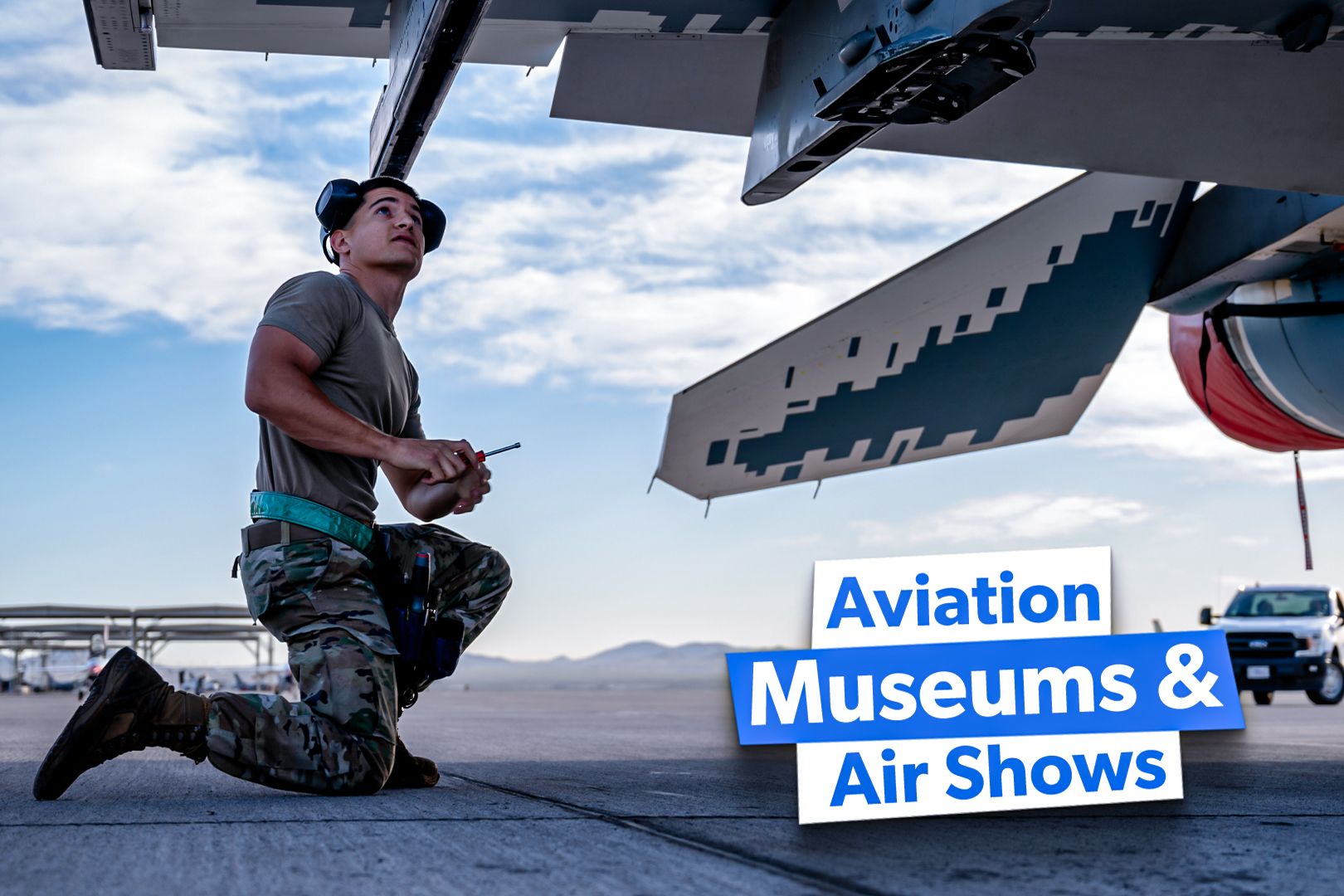
Related
Top 5 Can’t-Miss US Air Force Bases Offering Aviation Museums & Air Shows
These are some of the largest air force bases in the country.
World War II
The museum also has legendary aircraft from World War II, which helped the Allies win various conflicts in Europe.
B-17F “Memphis Belle”
The famed Memphis Belle is a Boeing B-17F Flying Fortress that completed over 25 combat missions during WWII. The aircraft returned safely to the US and then completed a publicity tour to sell War Bonds. The plane flew for the 324th Heavy Bomber Squadron and was named after the riverboat in the film Lady for a Night.
Photo: BlueBarronPhoto | Shutterstock
The B-17 was the backbone of the Air Force’s strategic bombing campaign. It was the fastest bomber available, and by the war’s end, over 12,700 had been built. Making it the third most-produced bomber of all time.
Four 1,200 hp Wright R-1820-97 turbo-supercharged radials powered the aircraft, with each engine producing around 750 hp (600 kW) at 7,000 ft. The forced induction allowed the engines to climb to a maximum altitude of 30,000 ft with a combat load.
The aircraft was equipped with up to thirteen .50 caliber M2 Browning machine guns in nine positions for defense. For offense, it could be fitted with a maximum of 4,500 lbs and 8,000 lbs of bombs for long-range and short-range missions, respectively.
Specifications according to the National Museum of the US Air Force are:
- Armament: thirteen .50 caliber M2 Browning machine guns and 8,000 lbs of bombs
- Engine: four 1,200 hp Wright R-1820-97 turbo-supercharged radials
- Maximum speed: 325 mph
- Range: 2,800 miles
- Combat radius: 600 miles
- Maximum ceiling: 37,500 feet
- Empty weight: 35,728 lbs
- Maximum gross weight: 48,720 lbs
B-29-36-MO Superfortress “Bockscar”
The Boeing B-29 Superfortress is the successor to the B-17 and was used towards the tail end of WWII and the Korean War. The aircraft was designed for high-altitude night strategic bombing but was also used for low-altitude bombing campaigns.
Photo: US Air Force
The particular aircraft displayed at the museum is the Bockscar. It is one of 15 silver-plated B-29s used by the 509th Bomb Wing. It also carried the second nuclear bomb, Fat Man, to Nagasaki, Japan.
The Bockscar was heavily modified to carry nuclear weapons. The bomb bay doors and the fuselage section between the two bomb bays were removed to create one 33-foot (10-meter) long bay. Weight was saved by eliminating armor plating and defensive gun turrets. Finally, the Silver-plated aircraft was powered by an improved engine, the Wright R-3350-41 Duplex Cyclone. This fuel-injected version of the engine produced 2,200 hp (1,640 hp).
Specifications according to the National Museum of the US Air Force are:
- Engines: Four Wright R-3350-41s producing 2,200 hp each
- Maximum speed: 357 mph
- Cruising speed: 220 mph
- Range: 3,700 miles
- Ceiling: 33,600 ft.
- Wingspan: 141 ft. 3 in
- Length: 99 ft.
- Height: 27 ft. 9 in
- Weight: 133,500 lbs
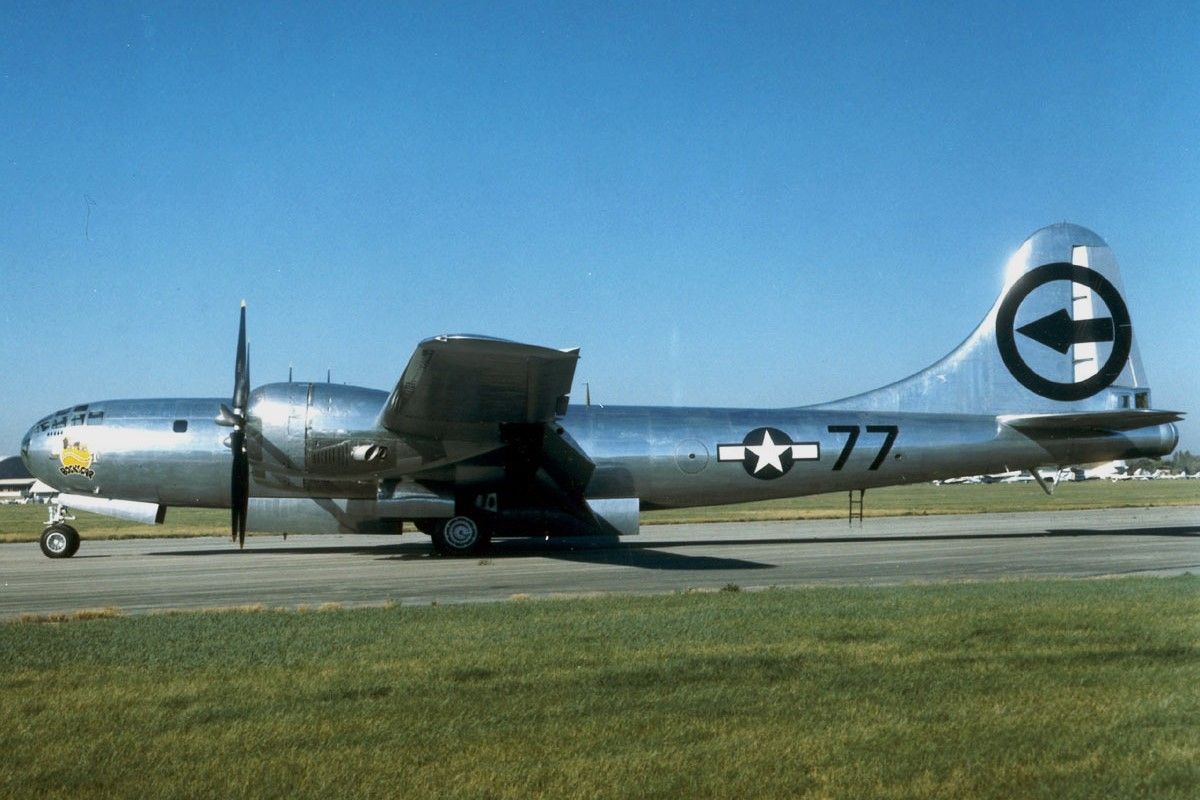
Related
What You Need To Know About The B-29 Superfortress Bomber
A guide and history into the Boeing B-29 Superfortress.
Modern Aircraft
The museum is home to a plethora of modern aircraft that shaped the landscape of military aviation today.
Lockheed F-117 Nighthawk
One of the most striking fighter designs in recent history, the Lockheed F-117 Nighthawk was built by the company’s famed Skunkworks division and is known as the first-ever operational aircraft to use stealth technology.
Photo: Simple Flying
The single-seater stealth aircraft was built to counter the Soviet Union’s increasingly effective surface-to-air missiles. Its unique shape gives it a tiny radar cross-section of 0.0108 ft² (0.001 m²). In addition, the aircraft has a specially designed exhaust that mixes hot exhaust with ambient air to reduce its infrared signature. It is also a subsonic aircraft since breaking the sound barrier will increase the likelihood of detection.
The design reduced its maneuverability and speed. So, even though it is designated as a fighter aircraft, it operates more like an attack aircraft than a fighter. It was equipped with two internal hardpoints, which allowed it to carry a range of missiles and bombs, including nuclear weapons.
59 production variants were built and were involved in 1,271 sorties during Desert Storm. The aircraft has also won the 1989 Collier Trophy, one of the most prestigious aeronautical awards in the world.
Specifications according to the National Museum of the US Air Force are:
- Engines: Two General Electric F404-F1D2 engines of 10,600 lbs. thrust each
- Crew: One
- Maximum cruise speed: 684 mph
- Range: Unlimited with aerial refueling
- Ceiling: 45,000 ft
- Span: 43 ft. 4 in
- Length: 65 ft. 11 in
- Height: 12 ft. 5 in
- Maximum Weight: 52,500 lbs
Northrop B-2 Spirit
The USAF museum is the home of the world’s only permanent display of the Northrop B-2 Spirit stealth bomber. It is one of the most technologically advanced aircraft of its time and one of the most expensive aircraft ever produced, with an average unit cost of $2.13 billion (the equivalent of $4.04 billion in 2024). The US initially planned to produce 132 aircraft, but high costs meant only 21 were made before the program was canceled.
Photo: Simple Flying
The aircraft is still in use today, with plans to keep the fleet operation until its retirement in 2032 when the B-21 Raider will take over its duties. The aircraft on display at the museum is the second of two built without engines or instruments and was used for static testing.
The aircraft was designed and built as part of the Advanced Technology Bomber (ATB) program—the program aimed to create a stealth bomber that could penetrate the heart of the Soviet Union undetected.
The flying wing aircraft can deliver up to 40,000 lbs (18,000 kg) of conventional and nuclear payloads in its two internal bomb bays. Its range is up to 6,000 NM (11,000 km), and due to its aerial refueling capabilities, it can fly further.
Due to its inherently unstable wing design, the aircraft is flown using a fly-by-wire system that uses four computers. The computer maps pilot inputs and manipulates the relevant flight control surfaces to maneuver the aircraft.
Specifications according to the National Museum of the US Air Force are:
- Engines: Four General Electric F118-GE-100 turbofans of 17,300 lbs. thrust each
- Wingspan: 172 ft
- Length: 69 ft
- Height: 17 ft
- Speed: High subsonic
- Takeoff weight: 336,500 lbs
Lockheed Martin SR-71 “Blackbird”
Another example of the USAF’s aerial dominance on display at the museum is the Lockheed Martin SR-71, unofficially known as the Blackbird. It is a long-range, strategic reconnaissance aircraft developed by Lockheed Martin’s Skunkworks and is one of the most famous and secretive projects the world has ever seen.
Photo: PJSAero | Shutterstock
The aircraft holds two records: an absolute speed record of 2,193.167 mph and an absolute altitude record of 85,068.997 feet. The aircraft on display at the museum has the distinction of having the most flying hours, with 2,981, and flew in 942 sorties (more than any other SR-71) over its 24-year career.
The aircraft had no defensive countermeasures. Instead, the pilots would push the thrust lever forward and outrun anything aimed at it.
Specifications according to the National Museum of the US Air Force are:
- Engines: Two Pratt & Whitney J58s producing 32,500 lbs. thrust each with afterburners
- Crew: Two
- Maximum speed: Mach 3+ (three times the speed of sound) or over 2,000 mph
- Range: More than 2,900 statute miles
- Ceiling: Over 85,000 ft
- Span: 55 ft. 7 in
- Length: 107 ft. 5 in
- Height: 18 ft. 6 in
- Weight: 140,000 lbs. loaded
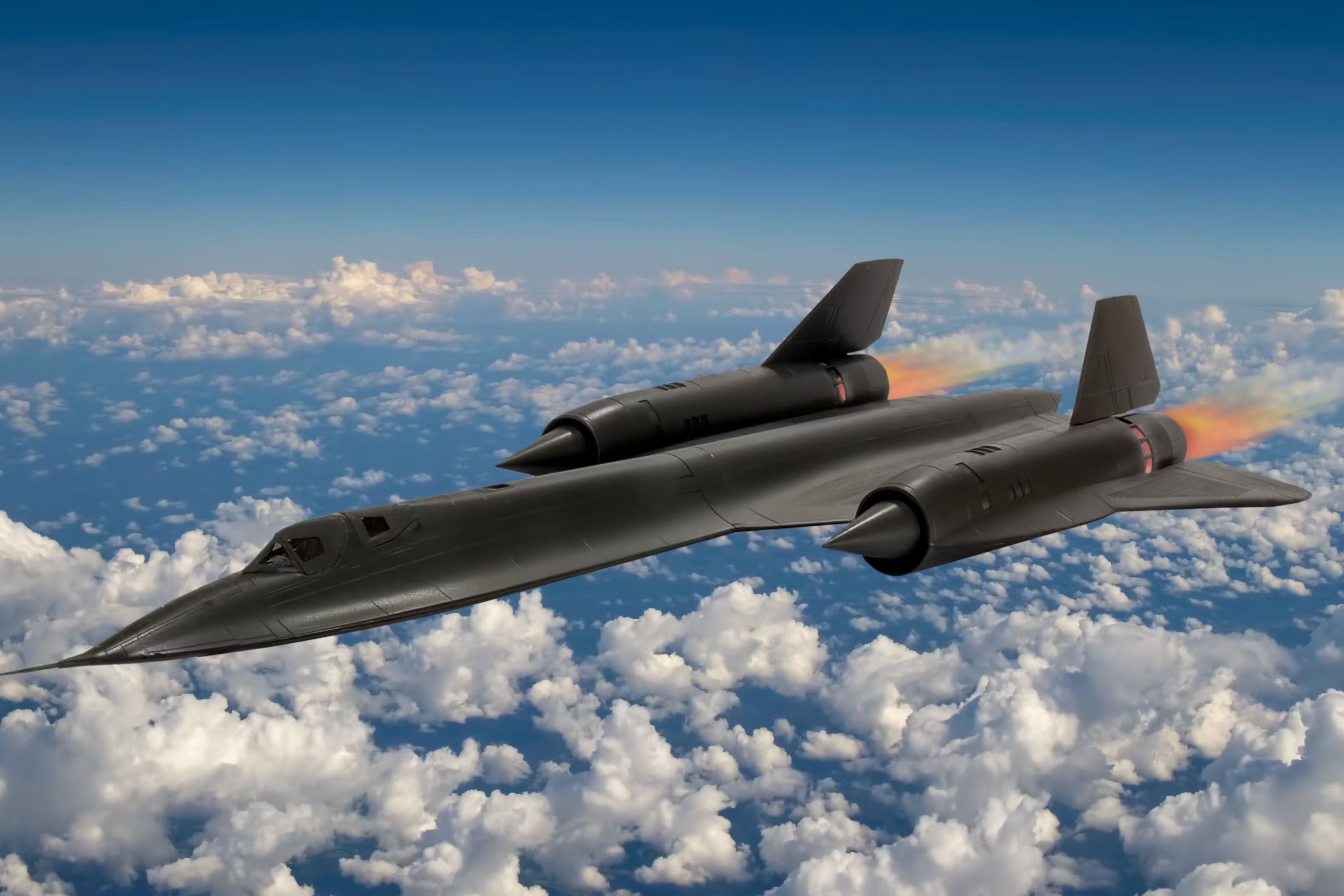
Related
Fastest Manned Aircraft In The World: A Look At The SR-71 Blackbird
The aircraft shattered records and climbed to new heights.

